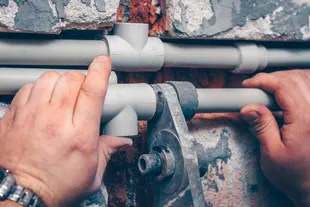A properly functioning waterline is essential for the reliable supply of clean water to homes, businesses, and other properties. When faced with waterline issues such as leaks, breaks, or deterioration, prompt repair or replacement is necessary to prevent water waste, property damage, and potential health hazards. This guide offers valuable insights into waterline repair and replacement, covering key considerations, signs of waterline problems, and tips for finding reputable professionals to handle the repair or replacement process.
Key Considerations for Waterline Replacement: Before initiating waterline repair or replacement, consider the following factors:
- Assessment of Waterline Condition: Conduct a thorough assessment of the waterline to identify signs of damage, deterioration, or leaks. Look for wet spots, water stains, reduced water pressure, or unusual sounds, indicating potential issues with the waterline.
- Type of Waterline Material: Determine the material used for the existing waterline, such as copper, PVC, PEX, or galvanized steel, as different materials may require specific repair or replacement methods.
- Location of Waterline: Identify the location of the waterline, including any underground or concealed sections, to assess accessibility and potential excavation requirements for repair or replacement.
- Compliance with Building Codes: Ensure that any waterline repair or replacement work complies with local building codes, regulations, and permitting requirements to avoid legal issues and ensure the safety and integrity of the water supply system.
- Budget and Financing Options: Establish a budget for waterline repair or replacement and explore financing options, insurance coverage, or assistance programs that may help offset the cost of the project.
Signs of Waterline Problems: Common signs of waterline problems that may require repair or replacement include:
- Sudden increase in water bills without a corresponding increase in water usage.
- Reduced water pressure or flow from faucets, showers, or appliances.
- Visible signs of water leaks, such as wet spots, water stains, or pooling water in the vicinity of the waterline.
- Unusual sounds, such as hissing, gurgling, or rumbling, coming from pipes or fixtures.
- Presence of sediment, rust, or discoloration in the water, indicating corrosion or deterioration of the waterline.
Tips for Finding Reputable Professionals for Waterline Repair and Replacement: When seeking professionals for waterline repair or replacement, consider the following tips:
- Research Local Contractors: Look for licensed, insured, and experienced plumbing contractors or excavation companies with a track record of successfully completing waterline projects in your area.
- Check Credentials: Verify the credentials, certifications, and qualifications of the professionals, as well as their reputation and customer reviews.
- Request Estimates: Obtain written estimates from multiple contractors, including the cost of materials, labor, permits, and any additional fees or charges.
- Inquire about Experience: Ask about the contractors’ experience and expertise in waterline repair and replacement, including their familiarity with different types of waterline materials and repair techniques.
- Review Contracts and Warranties: Review contracts carefully, including warranties or guarantees provided for the workmanship and materials used in the repair or replacement project.
Conclusion: Waterline Replacement is critical tasks that require careful planning, expertise, and attention to detail to ensure the reliable supply of clean water to homes, businesses, and other properties. By considering key factors such as the condition of the waterline, signs of waterline problems, and reputation of service providers, property owners can navigate the repair or replacement process with confidence and peace of mind, knowing that their water supply system is in capable hands.
